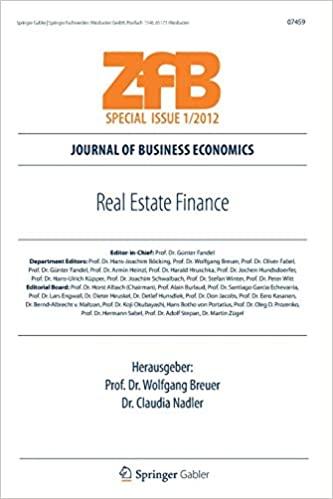Question
An investor has been offered a choice of two loans for the purchase of a building. The investor has agreed a purchase price of $7,500,000
An investor has been offered a choice of two loans for the purchase of a building. The investor has agreed a purchase price of $7,500,000 and intends to hold the building for five years. The investor expects the value of the property to increase by 1% per year. The property has a net operating income of $850,000 and this is expected to increase at the rate of 2.5% per year.
The first loan choice is a fixed-rate loan to be issued at an interest rate of 8.5% per annum. The investor intends to borrow 65% of the value of the building. The alternative loan is a participation loan, which carries an interest rate of 7.0% per annum but includes participation of 50% of the NOI above $850,000 and 50% of any gain in the value of the property. Answer the following questions, assume all loan calculations are on an annual basis and both loans fully amortize over 20 years.
(a) Calculate the annual debt service amount in each year the investor holds the property for the first (fixed-rate) loan offered. Also calculate the debt coverage ratio for this loan in year 1.
(b) Calculate the participation amount and the annual debt service for each year the investors holds the property for the participation loan. Also calculate the debt coverage ratio in year 1 for this loan.
(c) Calculate the effective borrowing cost paid by the investor for each loan and state which is the preferred loan from the investors perspective.
(d) Why do banks typically include a lockout provision or early repayment penalty for this type of loan?
Step by Step Solution
There are 3 Steps involved in it
Step: 1

Get Instant Access to Expert-Tailored Solutions
See step-by-step solutions with expert insights and AI powered tools for academic success
Step: 2

Step: 3

Ace Your Homework with AI
Get the answers you need in no time with our AI-driven, step-by-step assistance
Get Started


